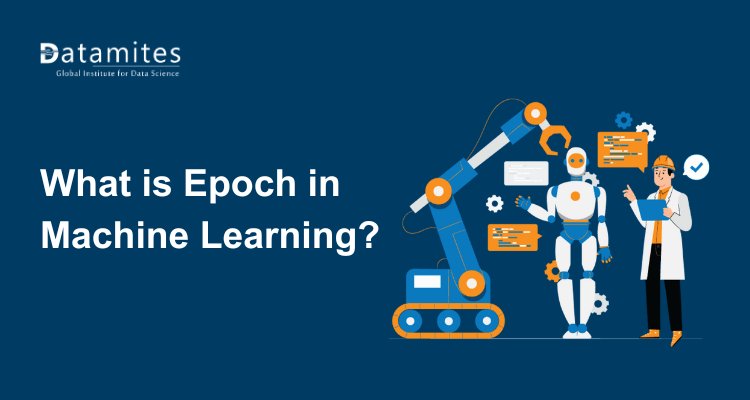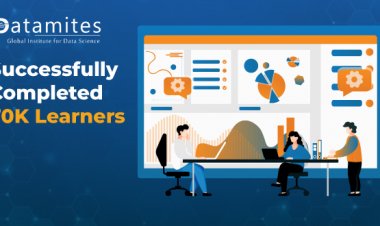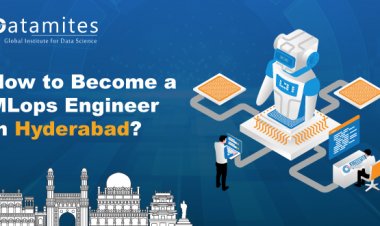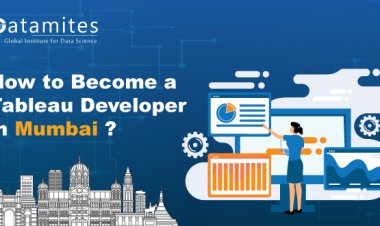Getting Started with Python for Data Science
This blog introduces the fundamentals of Python programming tailored for data science applications. It covers essential libraries and tools to help beginners start analyzing and visualizing data effectively.
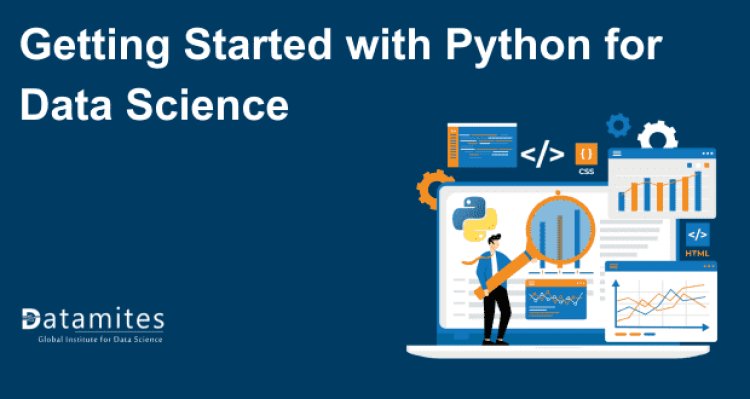
In the world of technology, few languages have had the profound impact that Python has. Originally developed by Guido van Rossum in the late 1980s, Python was designed with simplicity and readability in mind. Over the decades, it has evolved from a general-purpose language into one of the most powerful tools in the data science arsenal. Its rise to prominence in data science began in the early 2010s, coinciding with the explosion of data and the growing need for efficient analysis tools.
Python has become the go-to language in data science, used by startups and Fortune 500 companies alike for insights, automation, and predictive modeling. A 2024 Stack Overflow survey shows over 66% of data scientists use Python regularly, making it the most popular tool in the field. Backing this trend, MarketsandMarkets projects the global data science platform market to grow from USD 95.3 billion in 2021 to USD 322.9 billion by 2026. Whether you're starting a career or joining a data science course, Python is the ideal place to begin.
Setting Up Your Python Environment
Before diving into projects, you need to set up your Python environment. Here’s a simple guide to help you get started:
Step 1: Get Python on Your Computer
Python is a free tool, like a calculator for your computer, that helps you work with data. To use it, you’ll first need to “install” it — think of it like downloading a new app. Just go to python.org and click the big download button. Once it’s installed, you’re ready to move on.
Step 2: Use a Tool That Makes Everything Easier (Anaconda)
Here’s a little secret: most people in data science don’t just use Python on its own — they use something called Anaconda. Think of Anaconda as a “starter pack” for Python. It gives you Python plus all the other tools you’ll need — all in one download.
With Anaconda, you don’t need to worry about finding and installing extra parts. It’s like getting a toolbox that already has the hammer, screwdriver, and wrench included.
You can download it from anaconda.com. It’s completely free and trusted by millions of data scientists.
Step 3: Open Your Notebook (Just Like School!)
One of the best parts of Anaconda is something called Jupyter Notebook. It looks and works a bit like a digital notebook — you write in it, you run your code, and you see the results right there on the page. It’s perfect for learning and experimenting.
Think of Jupyter Notebook as your data science journal — and yes, it comes with Anaconda too.
Step 4: You're Ready to Learn!
Once you’ve downloaded Anaconda and opened Jupyter Notebook, you’re all set. No coding knowledge needed at this point — just curiosity and a willingness to explore.
Whether you're learning through an offline data science course, this setup is the perfect foundation for your learning journey.
Refer these articles:
- How Data Science is Shaping the Healthcare Industry
- The Role of Data Science in Cyber Security
- How Generative AI is Changing the Role of Data Scientists
Must-Know Python Libraries for Data Science
To fully leverage Data Science with Python, you must get comfortable with these essential libraries:
NumPy – Numbers Made Easy
NumPy helps you work with large sets of numbers efficiently. It's perfect for calculations, arrays, and basic stats — a must for any Beginner Python Data Science learner.
Pandas – Handle Data Like a Pro
Pandas lets you organize and clean your data using DataFrames (think of Excel tables). It’s the backbone of most data analysis tasks.
Matplotlib – Simple Visuals
This library helps you create charts like bar graphs, line plots, and histograms. It’s your first step into data visualization.
Seaborn – Beautiful Charts
Seaborn makes your charts look polished and professional with minimal code. Great for spotting trends and patterns quickly.
Scikit-learn – Machine Learning
Scikit-learn is your go-to for building simple machine learning models like classification and regression. It’s beginner-friendly and widely used.
TensorFlow & PyTorch – Deep Learning Tools
These are more advanced libraries used for building neural networks and AI systems. Ideal if you plan to explore deep learning later on.
Statsmodels – Statistical Insights
For formal statistical analysis like regressions and hypothesis testing, Statsmodels is the tool to use.
Learning these libraries is a significant part of any offline data science course. The best data science institutes structure their curriculum around projects that involve these tools.
Refer these articles:
- Data Science Course Fee in Bangalore
- How to Become a Data Scientist in Bangalore
- Why Data Scientist Career in Bangalore
Essential Python Skills Every Data Scientist Needs
If you're new to Python for Data Science, it's important to focus on the right skills. You don’t need to be a coding expert—just start with the basics and build from there.
- Python Basics for Data Science: Begin with core concepts like variables, data types (numbers, text), and basic operators. These are the building blocks of Python programming for data analysis.
- If-Else and Loops: Use if-else for decision-making and loops like for and while to repeat tasks efficiently—crucial skills in data science.
- Functions: Functions help you reuse code and keep it organized, making your programs cleaner and easier to manage.
- Data Structures: Learn lists, dictionaries, sets, and tuples. They’re essential for storing and working with data in any beginner project.
- Using Libraries: Get familiar with key libraries like NumPy, Pandas, Matplotlib, and Seaborn—vital tools in every data science course.
- Reading Data Files: Practice reading common file types like .csv, .txt, and .json. It’s a basic but critical skill in real-world projects.
- Cleaning Data: Learn to tidy up messy data by handling missing values and fixing formats. Data wrangling is key to accurate analysis.
- Writing Clean Code: Use good naming, comments, and structure to make your code easy to read—an important habit for all data science learners.
Mastering these skills will give you a strong start. They are taught in every quality data science institute, and they’ll set you up for success in Data Science with Python. If you’re wondering how to start data science with Python, this is the roadmap.
Refer these articles:
- Data Science Course Fee in Hyderabad
- Why Data Scientist Career in Hyderabad
- How to Become a Data Scientist in Hyderabad
Common Mistakes Beginners Make in Python for Data Science
Starting your journey in Beginner Python Data Science is exciting but beware of common pitfalls:
- Skipping the Basics: Jumping into advanced topics without learning core Python concepts like variables, loops, and functions.
- Not Practicing Enough: Watching videos without coding along leads to shallow understanding.
- Ignoring Data Cleaning: Trying to analyze messy data without handling missing values or duplicates.
- Misusing Libraries: Using Pandas or NumPy without knowing what each function actually does.
- Copying Code Blindly: Copy-pasting code without understanding how it works slows real progress.
- Messy Code: Writing unorganized code with no comments or structure makes debugging harder.
- Avoiding Version Control: Not using Git or backups — risky as projects get larger.
- No Real-World Practice: Only doing tutorials without trying actual datasets or mini-projects.
Don’t be afraid to make mistakes — that’s how you learn. Just make sure to reflect, ask questions, and keep practicing. Learning Data Science with Python is a journey, and every misstep is a step forward.
Python has transformed how we approach data science. Its simple syntax and powerful libraries make it the top choice for anyone working with data. Whether you're exploring or pursuing a career in data science, the best way to begin is to learn Python for Data Science—a gateway to analyzing data, building smart solutions, and making informed decisions.
To succeed, enroll in a structured data science training institute in Hyderabad, focus on the fundamentals, and practice with real-world examples. Master the essential tools, stay curious, and learn from mistakes. Remember, getting started with Python is your first step toward limitless opportunities in data science.
Among the leading institutions shaping data science education, DataMites Institute has earned a strong reputation, especially among professionals aiming to enter the healthcare and tech industries. With its industry-relevant curriculum, hands-on training, and real-time internship programs, DataMites Training Institute bridges the gap between academic concepts and real-world application—essential for careers in data science for healthcare.
DataMites institute offers Certified Data Scientist programs accredited by IABAC and NASSCOM FutureSkills, equipping learners with core competencies in machine learning, data science tools, and advanced analytics. These skills are critical in today’s healthcare environment, enabling solutions like predictive modeling, AI-based diagnostics, and data-driven decision-making.
For those seeking classroom-based learning, DataMites provides offline data science courses in Bangalore, Pune, Hyderabad, Chennai, Ahmedabad, Coimbatore, and Mumbai. It also supports international learners with flexible online data science training options. Whether you're launching your career or enhancing your skill set, DataMites offers job-ready training tailored for success in the rapidly evolving data science landscape.


